Updated: July 2, 2024
Rhododendrons are beloved for their stunning blooms and lush foliage, making them a favorite among gardeners. However, like all plants, they are susceptible to various diseases that can hinder their growth and beauty. This article delves into the most common diseases affecting rhododendrons, how to identify them, and effective treatment methods.
Rhododendron Diseases
Rhododendrons, part of the Ericaceae family, thrive in well-drained, acidic soils with adequate moisture. However, when their growing conditions are not optimal, they become vulnerable to diseases. These diseases can be fungal, bacterial, or viral in nature, each requiring specific identification and treatment approaches.
Fungal Diseases
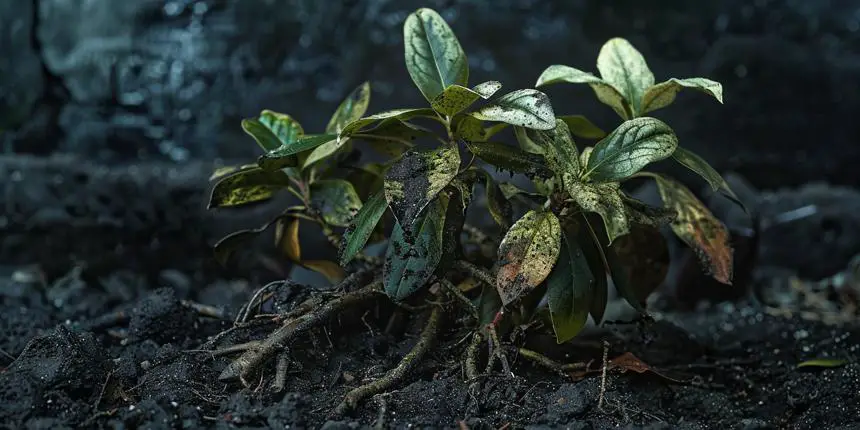
Phytophthora Root Rot
Identification:
- Symptoms: Wilting leaves, stunted growth, and blackened, decaying roots.
- Signs: The plant may appear water-stressed despite adequate watering.
Causes:
- Overly wet soil, poor drainage, and overwatering are primary contributors.
- The pathogen thrives in cool, wet conditions.
Treatment:
- Improving Drainage: Ensure the soil is well-drained. Raised beds can help in areas with heavy clay soil.
- Fungicides: Apply a fungicide specifically labeled for Phytophthora. Be sure to follow the manufacturer’s instructions.
- Cultural Practices: Avoid overwatering and ensure proper spacing between plants for air circulation.
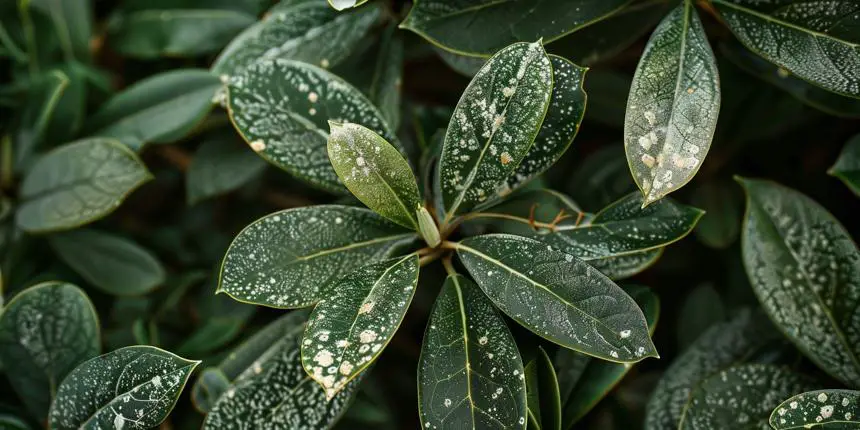
Powdery Mildew
Identification:
- Symptoms: White, powdery spots on leaves, stems, and buds.
- Signs: Leaves may curl, distort, and drop prematurely.
Causes:
- High humidity and poor air circulation promote the growth of the fungus.
Treatment:
- Fungicides: Use sulfur-based fungicides or those containing neem oil. Regular applications are necessary until the disease is controlled.
- Cultural Practices: Improve air circulation by pruning overcrowded branches and ensuring proper spacing between plants.
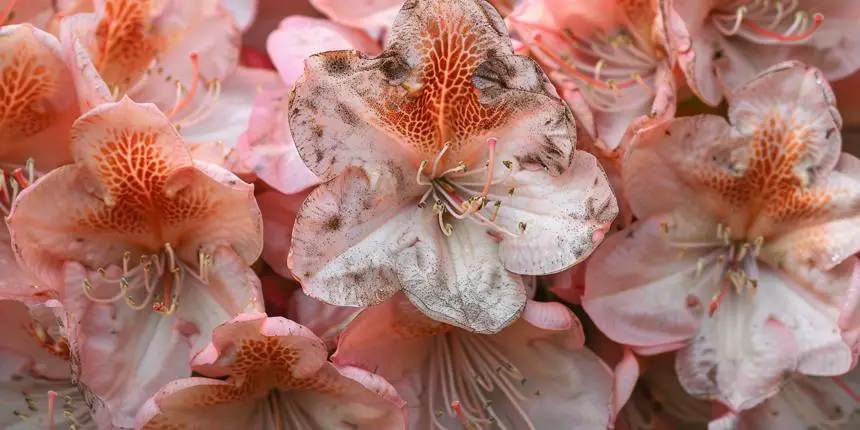
Botrytis Blight (Gray Mold)
Identification:
- Symptoms: Brown spots on flowers and leaves, grayish mold on infected areas.
- Signs: Infected flowers may drop prematurely.
Causes:
- Cool, damp conditions and poor air circulation favor the development of Botrytis cinerea.
Treatment:
- Sanitation: Remove and destroy affected plant parts to reduce spore spread.
- Fungicides: Apply fungicides labeled for Botrytis. Regular applications during cool, damp weather are crucial.
- Cultural Practices: Improve air circulation and avoid overhead watering.
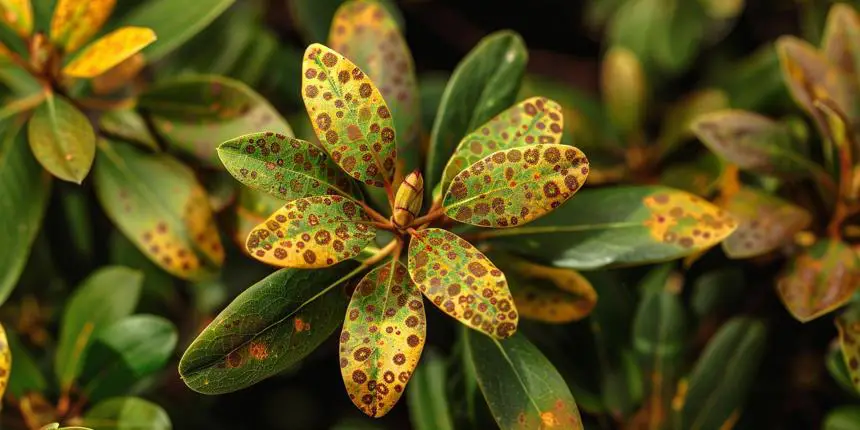
Leaf Spot Diseases
Identification:
- Symptoms: Various spots on leaves, which can be brown, black, or tan, often with yellow halos.
- Signs: Severe infections may cause leaf drop.
Causes:
- Fungal pathogens thrive in warm, wet conditions.
Treatment:
- Fungicides: Apply broad-spectrum fungicides as soon as symptoms appear.
- Sanitation: Remove and destroy infected leaves.
- Cultural Practices: Water plants at the base to avoid wetting the foliage and improve air circulation.
Bacterial Diseases
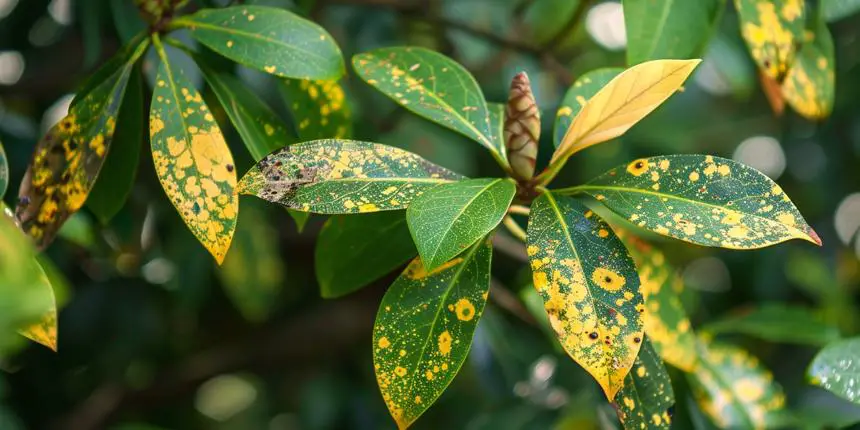
Bacterial Leaf Spot
Identification:
- Symptoms: Water-soaked spots that turn brown or black, often surrounded by yellow halos.
- Signs: Spots may merge, causing large areas of dead tissue.
Causes:
- High humidity and wet leaves provide a conducive environment for bacterial pathogens.
Treatment:
- Copper-based Sprays: Use copper-based bactericides to manage the disease.
- Sanitation: Remove and destroy infected leaves and plant debris.
- Cultural Practices: Avoid overhead watering and ensure good air circulation.
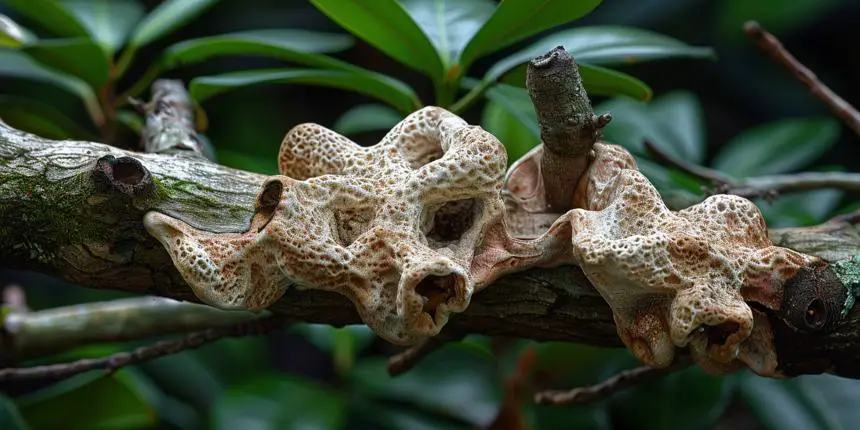
Crown Gall
Identification:
- Symptoms: Galls (tumor-like growths) on stems, roots, and branches.
- Signs: Stunted growth and plant decline in severe cases.
Causes:
- The bacterium Agrobacterium tumefaciens enters through wounds in the plant.
Treatment:
- Sanitation: Remove and destroy affected plant parts. Disinfect pruning tools between cuts.
- Cultural Practices: Avoid wounding plants and ensure good drainage.
Viral Diseases
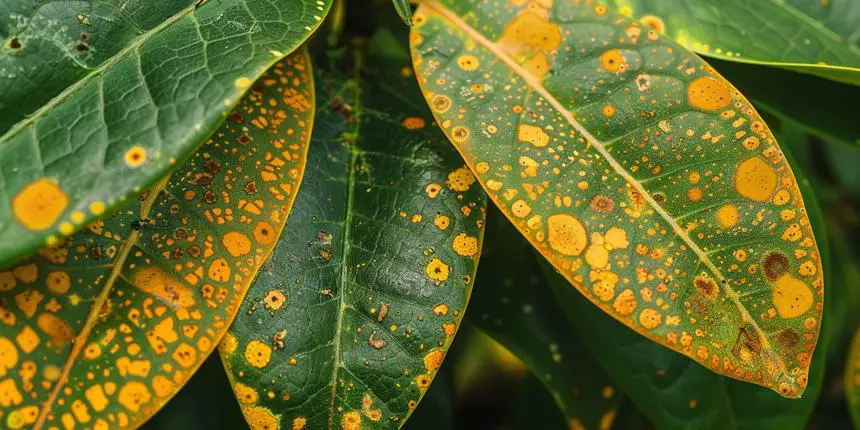
Rhododendron Ringspot Virus (RRV)
Identification:
- Symptoms: Chlorotic (yellow) rings or spots on leaves, distorted growth.
- Signs: Leaves may become mottled or show necrotic (dead) areas.
Causes:
- Spread by sap-sucking insects or through infected plant material.
Treatment:
- Removal: Remove and destroy infected plants to prevent the spread.
- Insect Control: Manage sap-sucking insects like aphids and thrips.
- Sanitation: Use virus-free planting material and disinfect tools.
Cultural Practices for Disease Prevention
Site Selection and Soil Preparation
- Proper Location: Choose a planting site with good air circulation and partial shade.
- Soil Preparation: Ensure the soil is well-drained and amend with organic matter to improve structure.
Watering Practices
- Avoid Overwatering: Water plants at the base to keep foliage dry and reduce disease risk.
- Drip Irrigation: Consider using drip irrigation systems to deliver water directly to the roots.
Mulching
- Benefits: Mulch helps retain soil moisture, suppress weeds, and improve soil structure.
- Application: Apply a 2-3 inch layer of organic mulch, keeping it away from the plant’s stem.
Pruning and Sanitation
- Regular Pruning: Remove dead or diseased branches to improve air circulation and reduce disease pressure.
- Tool Disinfection: Disinfect pruning tools between cuts to prevent the spread of pathogens.
Fertilization
- Balanced Fertilization: Use a balanced fertilizer appropriate for acid-loving plants to promote healthy growth.
- Avoid Over-fertilization: Excess nitrogen can promote lush growth susceptible to diseases.
Biological and Chemical Controls
Biological Controls
- Beneficial Microorganisms: Use soil inoculants containing beneficial fungi and bacteria to outcompete pathogens.
- Natural Predators: Encourage natural predators like ladybugs to control insect vectors.
Chemical Controls
- Fungicides and Bactericides: Use as a last resort and follow label instructions carefully.
- Systemic Treatments: Consider systemic treatments for severe infestations, ensuring they are labeled safe for rhododendrons.
Integrated Pest Management (IPM)
Monitoring and Identification
- Regular Inspections: Monitor plants regularly for early signs of disease.
- Accurate Identification: Identify the specific disease to choose the most effective treatment.
Prevention and Cultural Controls
- Healthy Practices: Implement cultural practices to maintain plant health and reduce disease incidence.
- Resistant Varieties: Plant disease-resistant rhododendron varieties when available.
Chemical and Biological Controls
- Judicious Use: Use chemical controls only when necessary and integrate with biological controls for a holistic approach.
- Environmental Considerations: Choose treatments that are least harmful to beneficial organisms and the environment.
Conclusion
Related Posts:
Rhododendron Plant
- Why Is My Rhododendron Plant Falling Over
- How Much Sunlight Does Rhododendron Plant Need?
- How to Get Rid of Spider Mites in Rhododendron Plant
- Rhododendron Plant Stages of Growth
- Rhododendron Plant Roots and Stems: an In-depth Look
- How to Get Rid of Lerps on Rhododendron Plant
- How to Get Rid of Mosquito Larvae in Rhododendron Plant Water
- Rhododendron Plant Soil: How to Choose the Right Type
- How to Get Rid of Crusader Bugs on Rhododendron Plant
- Why Does my Rhododendron Plant Have Brown Spots?
- How to Repot Rhododendron Plant
- How to Get Rid of Borers on Rhododendron Plant
- How to Get Rid of Fungus on Rhododendron Plant
- How to Get Rid of Nematodes on Rhododendron Plant
- How to Get Rid of Caterpillars on Rhododendron Plant
- How to Get Rid of Slugs on Rhododendron Plant
- How to Tell if Rhododendron Plant Needs Watering?
- How Much Oxygen Does Rhododendron Plant Produce?
- How Quickly Does Rhododendron Plant Grow?
- How to Get Rid of Fruit Flies on Rhododendron Plant
- Where to Place Rhododendron Plant for Perfect Feng Shui
- How to Save a Dying Rhododendron Plant
- How to Get Rid of Thrips in Rhododendron Plant
- How to Get Rid of Worms in Rhododendron Plant
- Is Rhododendron Plant Safe for My Pets?
- How to Grow Rhododendron Plant Outdoors
- Use a Hanging Rhododendron Plant to Freshen up Your Space
- What Causes Rhododendron Plant Leaves to Curl?
- How to Grow Rhododendron Plant Indoors
- What is Rhododendron Plant Commonly Used For?